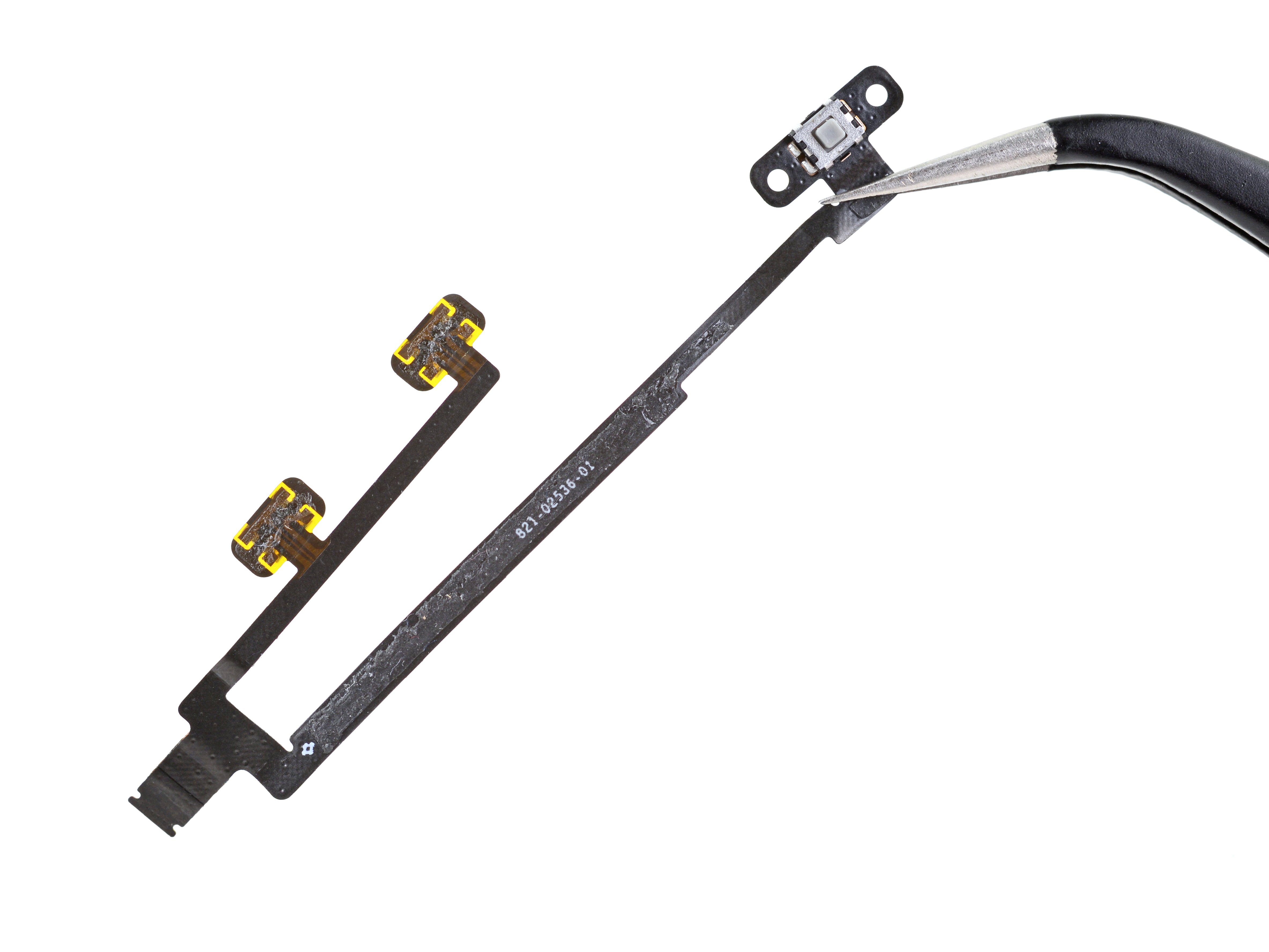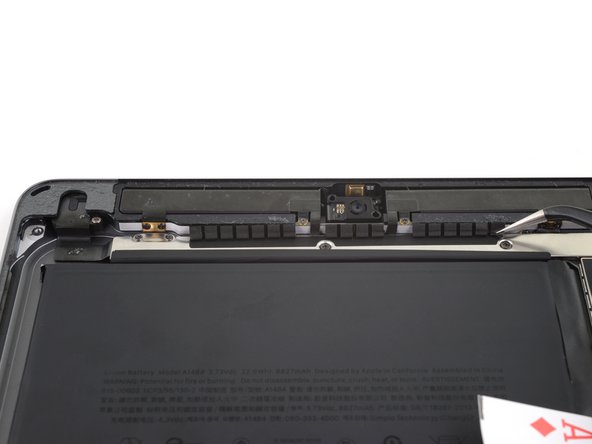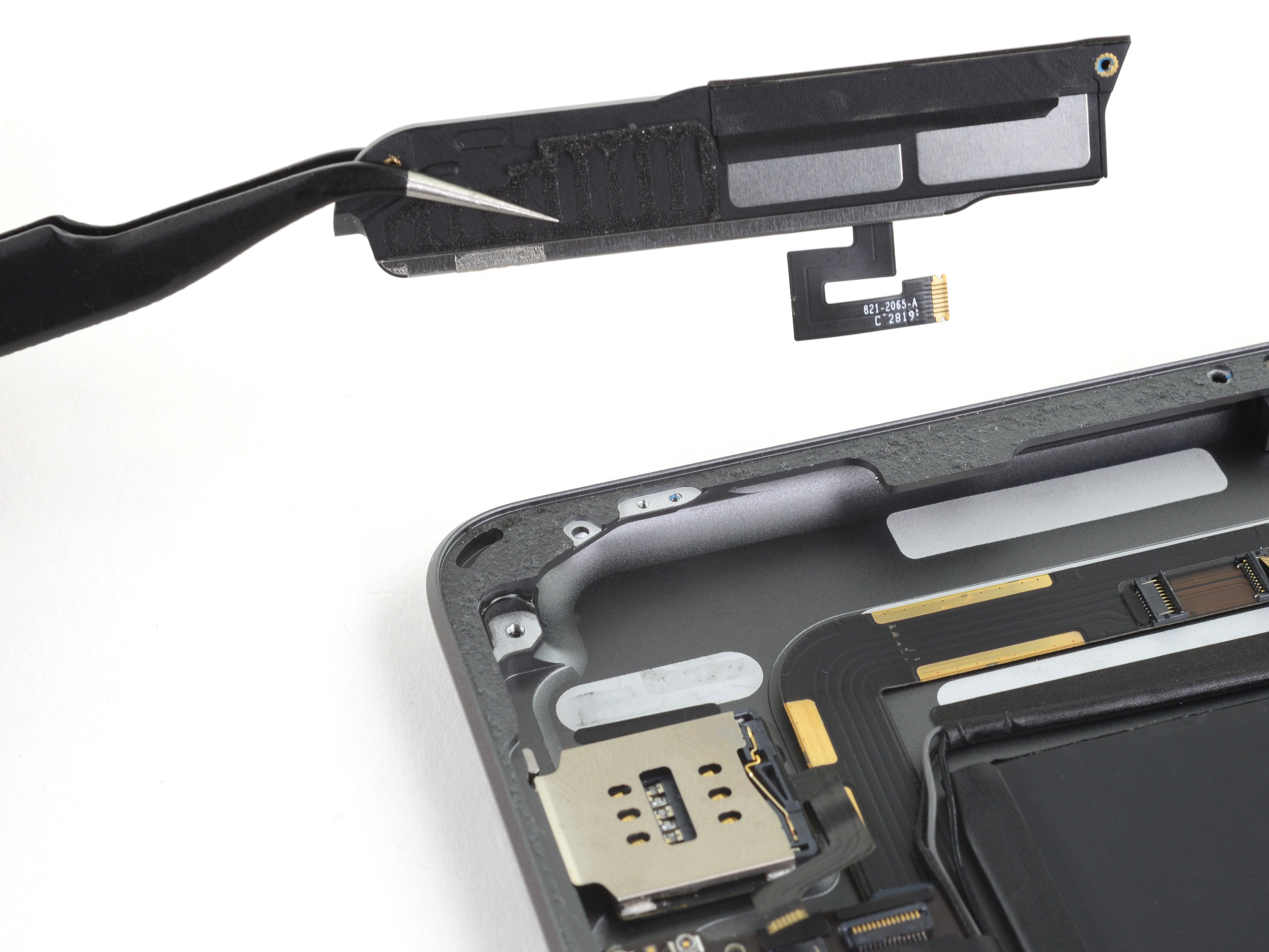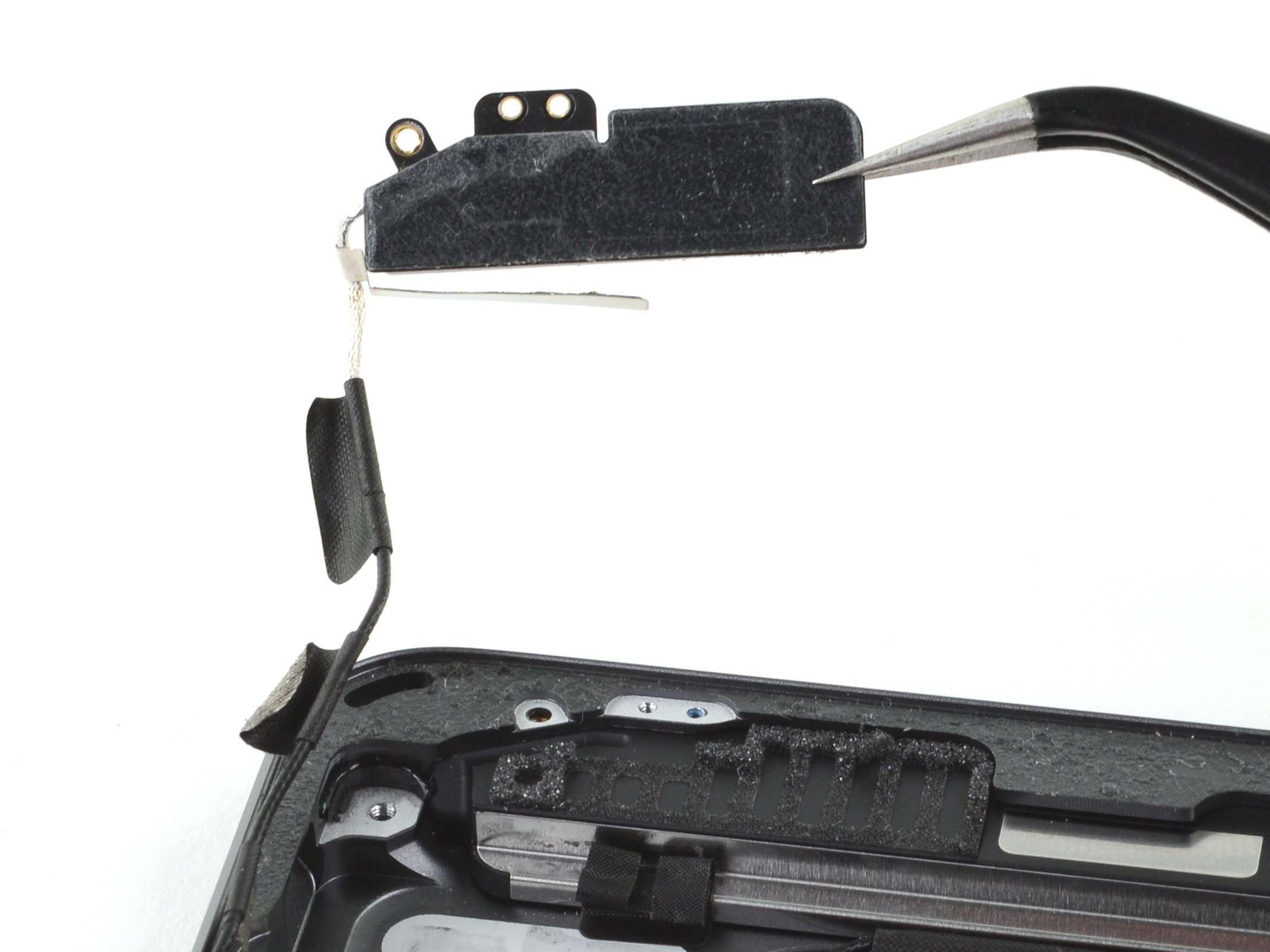iPad 7 Button Control Cable Replacement
Duration: 45 minutes
Steps: 64 Steps
Get ready to tackle the button control cable replacement in your iPad 7! Just a heads up, this guide is specifically for the LTE version, so if you have the Wi-Fi version, check out the other guide. The button control cable is your go-to for both the lock and volume buttons, so if they're acting up, you'll need to swap out the whole cable. When you’re isolating the battery, be super gentle with the battery blocker—those battery contacts are delicate and can get damaged pretty easily. If you're feeling brave and decide to skip isolating the battery, steer clear of metal tools unless absolutely necessary (like when you're unscrewing) to keep the battery safe and the circuit components intact. A few of the photos might be from a different model, so they could look a tad different, but don’t worry, they won’t mess with the steps. Happy repairing!
Step 1
- Warm up an iOpener and stick it on the left side of your device for a solid two minutes to get things nice and toasty.
Tools Used
Step 2
- While you're letting the adhesive do its thing, keep an eye out for these delicate spots that need some extra TLC when prying:
- Front camera
- Antennas
- Display cables
Step 3
Get ready for a smoother opening process! The next three steps will show you how to use our handy Anti-Clamp tool, designed to make things a breeze. If the Anti-Clamp isn't your jam, feel free to skip ahead three steps for an alternative method.
Need a little help mastering the Anti-Clamp? No worries, check out our guide for all the details.
If your iPad's surface feels a bit too slick for the Anti-Clamp to do its magic, just grab some tape and stick it on to create a better grip.
- Slide the blue handle back to release the Anti-Clamp’s arms.
- Set something under your iPad so it stays balanced between the suction cups.
- Place the suction cups near the center of the left side—one up top and one down low.
- Keep the bottom of the Anti-Clamp steady, then press down firmly on the top cup to get a solid suction grip.
Step 4
- Give that blue handle a little nudge forward to secure those arms in place.
- Now, twist that handle a full 360 degrees or until you see the suction cups starting to stretch—you're doing great!
- Keep an eye on those suction cups to make sure they're still in sync. If they start to drift apart, just loosen them a tad and realign the arms. You've got this!
Step 5
Take it easy and don't twist more than a half turn at a time. Give it a minute to relax between turns. Let the Anti-Clamp work its magic while you kick back!
Want the full scoop on using a hair dryer? Dive into this guide.
If the Anti-Clamp isn’t making enough space, just warm things up a bit more and give the handle a half-turn clockwise.
- Give it a minute to let the adhesive chill out and create a small gap to work with.
- If your screen is playing it cool and not heating up enough, try warming the left edge of the iPad with a hair dryer.
- Once the Anti-Clamp opens up a nice gap, slide an opening pick under the digitizer to start the lift.
- Just skip this step and keep rolling.
Step 6
If your screen is sporting some serious cracks, slapping on a layer of clear packing tape might just do the trick for your suction cup to stick. Feeling adventurous? You can also try using some heavy-duty tape instead of the suction cup. And if you're really in a bind, a dab of super glue can help you attach that suction cup right to the broken screen!
- First, let's warm up that screen a bit! Once it's nice and cozy to the touch, grab a suction handle and stick it right on the left edge of the screen, as close to the edge as you can get.
- Now, gently lift that screen with the suction handle to create a tiny gap between the digitizer and the frame. You got this!
- Next up, slide an opening pick into that gap you just made between the digitizer and the frame. Easy peasy!
Tools Used
Step 7
No need to stress if you see the opening pick through the digitizer—just gently pull it out. The LCD screen should be just fine, but be aware that you might leave some adhesive behind that could be a bit tricky to clean up.
- Pop in a second opening pick where you just made some space.
- Gently slide that pick towards the bottom-left corner of your device to break free from the adhesive's grip.
- Keep that pick snug in the bottom-left corner to ensure the adhesive doesn't play tricks and re-seal.
Step 8
- If your opening pick gets caught in the sticky glue, just give it a little roll along the edge of the iPad to keep that adhesive separation moving smoothly.
Step 9
- Gently slide your first opening pick up toward the top-left corner to loosen that sticky adhesive.
- Keep the pick lodged in the top-left corner so the adhesive doesn’t sneak back together.
Step 10
- Warm up an iOpener and stick it on the top edge of your device for a solid two minutes to get things nice and toasty.
Tools Used
Step 11
- Gently glide the pick around the top-left corner of your device to break that adhesive seal. You've got this!
Step 12
Steer clear of sliding that pick over the front camera—nobody wants to risk a scratched lens! Follow these steps to keep things safe and sound.
- Gently glide that opening pick along the top edge of your device, but hold up just shy of the front camera. You're doing great!
Step 13
- Gently pull the pick out so that just the tip stays tucked between the digitizer and the frame.
- Slide the pick over the front camera area to carefully loosen the adhesive.
- Set the pick down near the right side of the front camera before moving on to the next step.
Step 14
- Slide the pick back in and move it gently towards the top-right corner to fully break free the top adhesive.
- Keep the pick in the top-right corner to stop that adhesive from making a sneaky comeback.
Step 15
- Warm up your iOpener and stick it to the right edge of your device for a solid two minutes of heating action.
Tools Used
Step 16
- Twist that pick around the top-right corner of your device to break free the adhesive. You've got this!
Step 17
The display cables hang out about halfway up from the bottom of your iPad. When you’re sliding, pause once you hit roughly three inches from the bottom—steady does it!
- Slide a fresh opening pick right into the iPad's right edge and glide it smoothly to the center.
Step 18
- Warm up an iOpener and place it on the bottom edge of your device for a solid two minutes to loosen things up.
Tools Used
Step 19
Be careful not to rotate the pick all the way around the corner; you wouldn’t want to accidentally give the antenna a bad day!
- Gently slide the bottom-left pick down to the bottom-left corner to loosen that adhesive grip.
- Keep the pick tucked in the bottom-left corner before moving on to the next step.
Step 20
Just a friendly reminder: slide the pick gently toward the home button and avoid pushing it away. We wouldn't want you to accidentally mess up the antenna, right?
If you find yourself needing to glide that pick over this section once more, just pop it out and slide it back in at the bottom-left corner like a pro.
- Pop a new opening pick into the gap you just made along the bottom edge of the iPad.
- Gently slide the pick along the antenna, stopping just before you reach the home button.
- Let the pick rest to the left of the home button before moving on to the next step.
Step 21
Be careful not to insert the pick more than 1 mm to keep the right antenna safe and sound!
- Pop an opening pick into the little gap you just made.
- Gently slide the pick under the home button, aiming for the bottom-right corner. Keep just the tip sneaky between the digitizer and the frame—no full-on wedging!
Step 22
Keep your pick sliding toward the home button only—sliding it the other way could mess with the antenna, and we don’t want that!
If you need to slide the pick over this section again, simply take it out and re-insert it at the bottom-right corner. You've got this!
- Slide the pick back in and gently work it toward the home button to fully loosen that stubborn bottom adhesive.
- Once it's loosened, leave the pick resting just to the right of the home button before moving on.
Step 23
- Warm up an iOpener and stick it to the right edge of your device for a solid two minutes to loosen things up.
Tools Used
Step 24
Take it slow and steady here. Make sure the adhesive is nice and warm so it’s easy to work with, and carefully separate all the adhesive using a pick. Don’t hesitate to pause and reheat if you need to!
If you're feeling some serious resistance, no worries! Just give those edges another quick heat-up and gently slide along them with your opening pick. You'll be cruising in no time.
- Gently twist the two opening picks at the left corners of the iPad to carefully lift the digitizer just enough to break through the last bits of adhesive holding it down.
Step 25
- Gently lift the left edge of the digitizer upward to loosen the adhesive along the right side of your iPad a bit more.
Step 26
- Carefully support the digitizer while sliding an opening pick between the two display cables to gently break apart the last bit of adhesive holding them together.
Step 27
- Once the adhesive is all peeled away, open up the digitizer like you're flipping a book and set it next to the iPad, keeping them nice and parallel.
- When you're putting it all back together, grab some isopropyl alcohol to clean off any leftover adhesive on both the frame and the digitizer (if you're reusing it). Then, stick on some fresh adhesive strips or those nifty pre-cut adhesive cards.
- Keep an eye on those display cables when you're putting everything back in place. Make sure they're tucked neatly under the LCD screen to avoid any unwanted damage.
Step 28
- Grab your Phillips screwdriver and take out the four 4.3 mm screws holding the LCD in place. Easy peasy!
- As you go along, keep those screws safe and sound. They each have a specific spot to go back to, and mixing them up could cause some trouble later on.
- If there's any tape covering the screws, peel it off so you can access them. Nothing should get in the way of your progress!
Step 29
Take it easy—don’t yank the LCD out just yet! It’s still connected by a few cables near the home button, so be gentle. Just lift the LCD from the front-facing camera side for now.
- Gently wedge the flat end of a spudger under the LCD just enough to loosen it so you can grab hold with your fingers.
- Carefully flip the iPad’s LCD like turning a page in a book, lifting near the camera and folding it over the home button end of the back case.
- Set the LCD down on a clean, soft, lint-free surface to easily reach the display cables without any hassle.
Tools Used
Step 30
- Grab your trusty Phillips screwdriver and gently unscrew that lone 2.3 mm-long screw holding the battery connector snugly to the logic board. You've got this!
Step 31
Check out these photos to get a clear look at the battery connector beneath the logic board. Use them as your guide while you carefully disconnect the battery.
You'll notice that the battery connector has spring-loaded parts on the logic board that press down on the battery's contact pads. Since both the logic board and the battery are glued in place, you'll need to gently slide something thin and flexible between the contact points to safely disconnect the battery.
Step 32
Watch out while you're isolating that battery with a blocker! Those battery contacts can be a bit temperamental—bend or break them, and you're looking at some serious damage. Stay sharp and keep things in check!
Make sure the iFixit logo on the battery blocker is looking up at you, ready to help!
Be gentle with the battery blocker—no need to push it under the connector like you're trying to win a wrestling match. If it’s being stubborn, a playing card can be your trusty sidekick in disconnecting the battery instead.
The battery blocker or playing card should glide smoothly under the logic board without any hitches. Once it’s in, it’s cool to let it chill at about a 15-degree angle.
- Gently glide the battery blocker under the logic board's battery connector at a cool 35-degree angle. You're doing great!
- Keep that battery blocker snug in place as you continue with your fantastic repair journey.
Tools Used
Step 33
- Grab your Phillips screwdriver and carefully remove the three 1.4 mm-long screws holding down the display cable bracket. You got this!
Step 34
- Take off the display cable bracket with a smile! It's time to get that screen ready for action.
Step 35
- Grab the flat end of your spudger and gently lift the LCD cable connector straight up to disconnect it. No need to yank—just a smooth pull.
- When you're ready to reattach those press connectors, take your time! Align one side first and press gently until it clicks into place. Then do the same on the other side. Avoid pressing the middle to keep things neat. If it's not aligned properly, you might bend the pins—and that's no good. Keep it cool and steady.
Tools Used
Step 36
- Gently detach the LCD and lay it down screen-side facing the soft, clean surface. You've got this!
Step 37
- Grab your trusty tweezers and gently peel away the tape that's keeping the home button cable ZIF connector under wraps. You're doing great!
Tools Used
Step 38
- Gently use the tip of a spudger, an opening tool, or even your fingernail to flip up the tiny, hinged locking flap on the home button cable ZIF connector. Easy does it!
Tools Used
Step 39
- Grab a pair of tweezers and gently tug the home button ribbon cable straight out of the ZIF connector. Keep it smooth, no rush!
Tools Used
Step 40
Be gentle when prying! Focus on the connectors themselves, not the socket on the logic board, to keep your iPad in one piece.
- Grab the flat end of your trusty spudger and gently lift the two digitizer cables straight up to pop those press connectors loose.
Tools Used
Step 41
Be super careful not to poke or rip that home button ribbon cable!
- Grab the flat end of a spudger and gently nudge the vibration isolator right beneath the SIM card reader.
- Carefully lift and remove the vibration isolator. Easy peasy!
Tools Used
Step 42
The cable is held in place with a bit of gentle adhesive.
- Grab your trusty tweezers and gently lift the home button cable away from the rear case like a pro!
Tools Used
Step 43
Grab an opening pick to gently slice through any leftover adhesive still holding the front panel assembly to the frame.
Keep in mind, without proper insulation, parts of the digitizer might short out against other components, messing with your touch input.
This insulation is super sneaky—it's invisible to the naked eye and totally different from the foam dust barrier strips you see on many iPads.
- Start by carefully removing the front panel assembly.
- If you're noticing any odd 'ghost' or 'phantom' touch issues with your new display, don't stress! Simply add a thin layer of insulating tape (think Kapton tape) to the highlighted areas on the back of the panel. Most replacement displays come pre-insulated, so you shouldn't need to add tape, but if you do, it’s an easy fix.
- When putting everything back together, be sure to clean up any leftover adhesive from your iPad. Grab some high-concentration isopropyl alcohol (90% or higher) and a lint-free cloth to scrub those glued areas clean. This will ensure the fresh adhesive sticks just right!
- Now, give your iPad a quick functionality test, and use our display adhesive guide to apply the pre-cut adhesive strips to the back of the display. Once you're done, seal everything up and you're good to go!
Step 44
- Gently peel back the LCD buffer tape from the top component bracket, like you're unveiling a surprise gift!
Step 45
- Grab your Phillips screwdriver and carefully unscrew the five screws holding down the upper component bracket.
- There are three screws that are 1.4 mm long.
- And two screws that measure 1.9 mm long.
Step 46
You might have to gently peel away the upper component bracket from some tape that’s holding it snugly to the logic board.
- Gently pry up the upper component bracket using the pointed tip of your spudger until you can grab it with your fingers.
- Take out the upper component bracket.
Tools Used
Step 47
- Grab your trusty spudger and gently lift the rear camera connector straight up. It's like giving it a little hug to let it know it's time to disconnect!
Tools Used
Step 48
- Warm up that iOpener and give it a cozy 30-second hug on the rear camera.
Tools Used
Step 49
- Grab your opening tool and gently pop the rear camera out of the back case. Easy does it!
Step 50
- Carefully detach and take out the rear camera.
Step 51
- Gently peel off any tape that’s covering the button control cable ZIF connector. Take it slow, we don't want to damage anything!
Step 52
- Gently use the tip of a spudger, an opening tool, or even your fingernail to lift up the tiny hinged locking flap on the button control cable’s ZIF connector.
Tools Used
Step 53
- Gently grab your trusty tweezers and with a delicate touch, pull that button control cable straight out of the ZIF connector. You've got this!
Tools Used
Step 54
- Grab your trusty Phillips screwdriver and get ready to tackle this! Unscrew those two 2.3 mm-long screws that are holding the volume button bracket snugly to the rear case. You've got this!
Step 55
- Grab your trusty Phillips screwdriver and let’s get those two little 2.3 mm screws out of the way that are holding the lock button bracket in place. You got this!
Step 56
- Gently slide the pointy end of a spudger between the back case and the bottom of the volume button bracket to pop it loose.
- Take off the volume button bracket.
Tools Used
Step 57
- Grab your spudger and use the flat end to gently nudge the volume buttons out of their cozy spots in the rear case. No need to rush, just a gentle push and you'll be on your way!
Tools Used
Step 58
- Slide an opening pick between the button control cable and the rear case, like you’re gently sliding into a cozy spot on the couch.
- Now, glide that pick up towards the lock button to break the adhesive that's been holding the button control cable to the rear case. You've got this!
Step 59
Once you unplug the button control cable, the lock button might feel a bit loose—totally normal, so no worries!
- Carefully unplug the button control cable.
- When putting everything back together, make sure to pop the lock button neatly back into its spot.
Step 60
- Heat up your iOpener and let it sit on the button control cable for about 30 seconds. This'll loosen things up just right!
Tools Used
Step 61
- Grab your trusty tweezers and give that upper volume button a gentle squeeze.
- Slide an opening pick right between the volume control cable and the upper volume button—like you're sneaking a peek at a surprise!
- Carefully peel away the volume control cable from the upper volume button, just like unwrapping a gift!
Tools Used
Step 62
- Now, let's keep that momentum going! Just like before, carefully peel off the volume control cable from the lower volume button. You've got this!
Step 63
- Grab your trusty tweezers and gently grip the lock button bracket.
- Now, slide a halberd spudger or opening pick between the lock button bracket and the button control cable.
- Carefully peel the button control cable away from the pegs holding it onto the lock button bracket.
- When it's time to put everything back together, use some Tesa tape to securely reattach the volume buttons and lock button bracket to the button control cable.
Tools Used
Step 64
- Now, let's put your gadget back together by retracing your steps like a pro!
- Got some e-waste? Don't just toss it—bring it to an R2 or e-Stewards certified recycler for a responsible goodbye.
- If things didn’t go exactly as you hoped, no worries! Try some basic troubleshooting or swing by our iPad 7 Answers community for a little extra support.
-
































































































































































